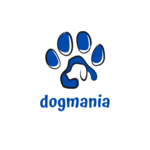The Dos and Don'ts of Transitioning Your Dog to a Raw Food Diet in 2024
Transitioning your dog to a raw food diet is a significant decision that requires careful consideration and planning. Advocates of raw feeding believe it can offer numerous health benefits, from improved digestion to shinier coats and increased energy levels. However, making this switch involves more than simply tossing your dog a raw steak. To ensure a smooth transition and maintain your dog's health, follow these essential dos and don’ts.
The Dos
1. Do Your Research
Before you start, gather as much information as possible about raw feeding. Understand the nutritional needs of your dog, the types of raw foods available, and the benefits and potential risks. Consult reputable sources and consider joining raw feeding communities online to gain insights and tips from experienced raw feeders.
2. Do Consult Your Veterinarian
A vet’s guidance is crucial when transitioning to a raw food diet. Not all dogs are suitable candidates for raw feeding, especially those with specific health conditions or dietary restrictions. Your vet can help tailor a raw diet plan that meets your dog's unique needs and monitor their health throughout the transition.
3. Do Start Gradually
A sudden switch to raw food can upset your dog's digestive system. Introduce raw food slowly by mixing it with their current diet, gradually increasing the proportion of raw food over a week or two. This gradual approach helps your dog's digestive system adjust to the new diet.
4. Do Ensure a Balanced Diet
A balanced raw diet typically includes muscle meat, organ meat, bones, and a small percentage of fruits and vegetables. Each component provides essential nutrients. For instance, bones supply calcium, while organs like liver offer vital vitamins and minerals. Ensure you vary the types of proteins and other ingredients to provide a wide range of nutrients.
5. Do Observe Your Dog’s Reaction
Monitor your dog closely for any signs of digestive distress, such as diarrhea, vomiting, or lethargy. Also, watch for positive changes like improved coat condition, better breath, and increased energy. Adjust the diet based on your observations and consult your vet if you notice any adverse reactions.
6. Do Maintain Hygiene
Handling raw meat requires strict hygiene to prevent bacterial contamination. Always wash your hands, utensils, and feeding bowls thoroughly. Store raw meat properly in the refrigerator or freezer and defrost it safely to avoid bacterial growth.
The Don’ts
1. Don’t Ignore Food Safety
Raw meat can harbor harmful bacteria like Salmonella and E. coli, posing risks to both dogs and humans. Ensure that the meat you purchase is fresh and of high quality. Avoid feeding your dog expired or spoiled meat. Consider purchasing meat from suppliers who specialize in raw pet food to ensure it meets safety standards.
2. Don’t Feed Cooked Bones
Cooked bones are brittle and can splinter easily, posing a choking hazard or causing internal injuries. Only feed your dog raw bones, which are softer and safer to chew. Supervise your dog while they eat bones to prevent choking and other accidents.
3. Don’t Overfeed
It's easy to overestimate the amount of food your dog needs, especially with raw diets. Overfeeding can lead to obesity and other health problems. Calculate the appropriate portion size based on your dog’s weight, age, and activity level. Typically, dogs should consume about 2-3% of their body weight in raw food daily.
4. Don’t Mix Raw and Kibble
Mixing raw food with kibble in the same meal can cause digestive issues due to the different digestion rates. If you prefer to feed both, do so in separate meals, allowing several hours between each type of food. This practice helps maintain optimal digestion and nutrient absorption.
5. Don’t Ignore Supplements
While a raw diet can be nutritious, it might not provide all the necessary vitamins and minerals. Supplements like fish oil for omega-3 fatty acids, vitamin E, and kelp can help ensure a well-rounded diet. Consult your vet for recommendations on appropriate supplements for your dog.
6. Don’t Be Afraid to Adjust
Every dog is different, and what works for one may not work for another. Be prepared to make adjustments to your dog’s diet based on their health and preferences. Regularly review their condition with your vet and be open to tweaking the diet as needed.
conclusion
Transitioning your dog to a raw food diet can be a rewarding decision that enhances their overall well-being. By following these dos and don’ts, you can ensure a smoother transition and a healthier diet for your furry friend. Remember, the key to a successful raw diet is research, consultation, and careful observation. With the right approach, your dog can thrive on a raw food diet and enjoy the many benefits it offers.



leave me your thoughts here